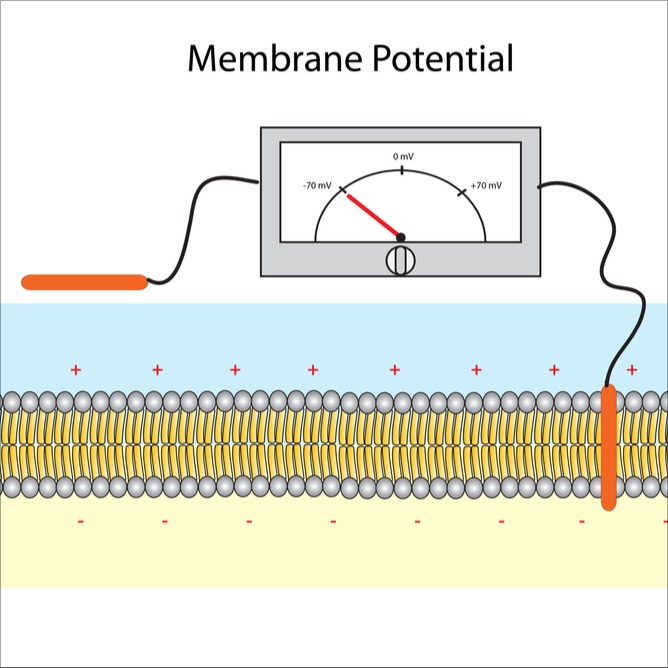
Electromagnetic fields (EMF) influence the cell membrane potentials in various ways:
-
Depolarisation and hyperpolarisationeMF can change the resting potential of the cell membrane. Depolarisation (reduction of the negative potential) can promote cell division, while hyperpolarisation (increase of the negative potential) supports the differentiation of cells.
-
Ion channels and transporterseMF can modulate the activity of ion channels and transporters in the cell membrane. This influences the flow of ions such as calcium (Ca²⁺), sodium (Na⁺) and potassium (K⁺), which in turn changes the membrane potential.
-
Faraday couplingeMF can move surface charges on the cell membrane through magnetoelectric induction. This can directly influence the membrane potential and change the activity of receptors and transporters.
-
Electroconformational couplingperiodic changes in the electric field due to EMF can change the conformation of molecules, especially enzymes in the cell membrane. This can influence metabolic activity and signalling in the cell.
-
Stochastic resonanceweak electrical signals that cannot normally be detected can be amplified by the addition of "white noise". This allows cells to respond to EMF signals that would otherwise be below the threshold of perception.
Through these mechanisms, EMFs can modulate the cell membrane potential and thus influence various cellular processes such as proliferation, differentiation and migration.
